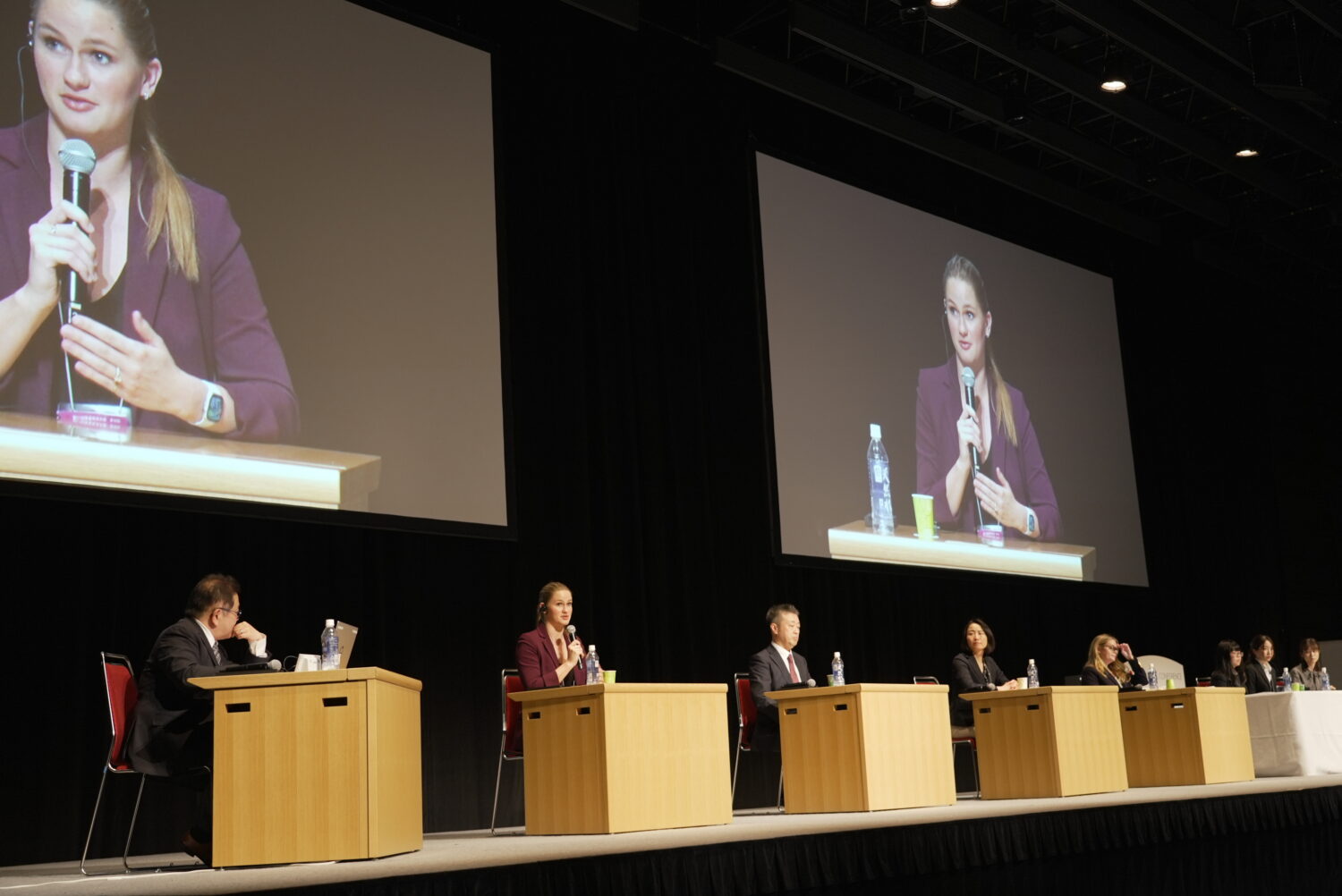Along with the status of measures in FY23 (i.e., April 2023 to March 2024), the report focused on the following:
- Progress in Fukushima’s reconstruction.
- Securing energy security at the same time as working toward Green Transformation (GX) carbon neutrality.
- Issues in realizing GX carbon neutrality, and responses.
Regarding the reconstruction of Fukushima, the report took up the issue of the offshore release, starting in August 2023, of water treated with the multi-nuclide removal equipment known as the Advanced Liquid Processing System (ALPS) at Fukushima Daiichi, belonging to the Tokyo Electric Power Co. (TEPCO).
The report explained that because ALPS cannot remove tritium, the water treated by the system is being further diluted with seawater to a level much lower than the regulatory limit before being released into the sea, with no radiation effects on people or the environment.
The report also addressed efforts to lift an evacuation order for areas near Fukushima Daiichi designated as those in which “residents will not be able to return home for a long time” after the March 2011 accident. So-called Specified Reconstruction and Revitalization Bases were established in the areas in May 2017 as a means toward lifting the order, and residents were expecting to be able to return to their homes in five years or so. In November 2023, the evacuation order was lifted for the entire area.
According to a system of Specified Living Areas for Returnees, established in June 2023, the towns of Okuma, Futaba, Namie, and Tomioka were all recognized in February 2024 as subject to the Project for Reconstruction and Revitalization of Specified Living Areas for Returnees.
From now on, decontamination and infrastructure development will be conducted at the four towns to promote the lifting of the remaining evacuation orders. The report said that throughout the 2020s, “The government will attempt to lift evacuation orders so that all the residents who want to go home can do so.”
As for securing energy security in a way consistent with carbon neutrality, the report illustrated various geopolitical risks adversely affecting energy recently, including the Russian invasion of Ukraine and the worsening situation in the Middle East.
It started out by expressing concern over the increasing uncertainty about global energy conditions. Noting that fuel prices have remained high for Japan while demand for electricity is expected to increase, the report stated that “‘variables with possible adverse effects may also increase.” Overall, it expressed concern about increasing uncertainty.
For example, electricity demand was put at the level of about 1,000TWh during the period 2020 to 2030, in light of the assumptions about such demand in the decade through FY33 announced by the Organization for Cross-Regional Coordination of Transmission Operators (OCCTO) in January 2024.
The white paper now says that demand will increase to 1,350-1,500TWh by 2050 on account of the new and replacement construction of data centers and semiconductor plants.
Although electricity demand had been expected to decrease according to assumptions made a year ago, it is now expected to increase. Based on such circumstances, the white paper pointed to a need to shift Japan’s current supply-and-demand structure to “one that is robust against crises,” so as to resolve structural issues that the country faces on energy. That perspective may be helpful when the next Strategic Energy Plan is issued. The Advisory Committee for Natural Resources and Energy began deliberations last month (May 2024) toward revising the plan.
Regarding global issues in achieving GX and carbon neutrality, and the responses that should be made to such issues, the report noted that COP28, held from November 30 to December 12 last year (2023) in Dubai, clearly cited nuclear energy as a measure for combating climate change.












